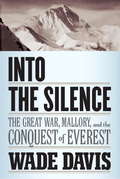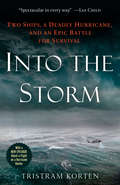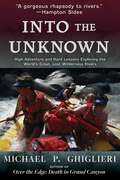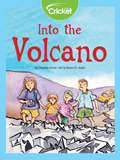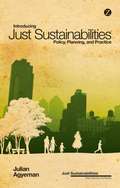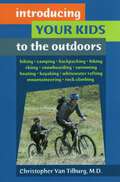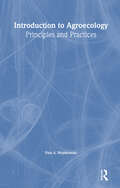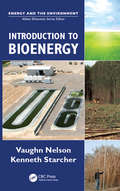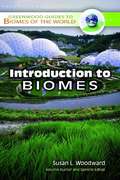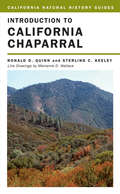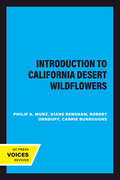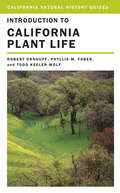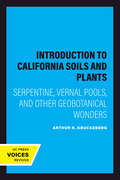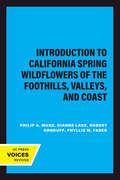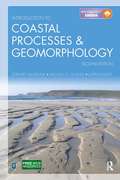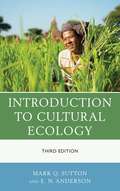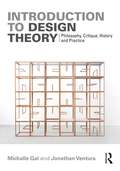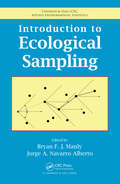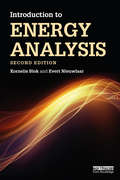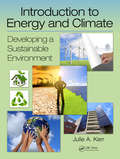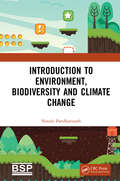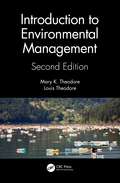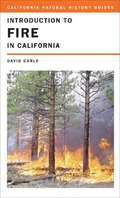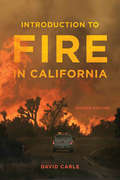- Table View
- List View
Into the Silence: The Great War, Mallory and the Conquest of Everest
by Wade DavisOn June 6, 1924, two men set out from a camp perched at 23,000 feet on an ice ledge just below the lip of Mount Everest's North Col. George Mallory, thirty-seven, was Britain's finest climber. Sandy Irvine was a young Oxford scholar of twenty-two with little previous mountaineering experience. Neither of them returned. In this magisterial work of history and adventure, based on more than a decade of prodigious research in British, Canadian, and European archives, and months in the field in Nepal and Tibet, Wade Davis vividly re-creates British climbers' epic attempts to scale Mount Everest in the early 1920s. With new access to letters and diaries, Davis recounts the heroic efforts of George Mallory and his fellow climbers to conquer the mountain in the face of treacherous terrain and furious weather. Into the Silence sets their remarkable achievements in sweeping historical context: Davis shows how the exploration originated in nineteenth-century imperial ambitions, and he takes us far beyond the Himalayas to the trenches of World War I, where Mallory and his generation found themselves and their world utterly shattered. In the wake of the war that destroyed all notions of honor and decency, the Everest expeditions, led by these scions of Britain's elite, emerged as a symbol of national redemption and hope. Beautifully written and rich with detail, Into the Silence is a classic account of exploration and endurance, and a timeless portrait of an extraordinary generation of adventurers, soldiers, and mountaineers the likes of which we will never see again.From the Hardcover edition.
Into the Storm: Two Ships, a Deadly Hurricane, and an Epic Battle for Survival
by Tristram Korten“An intense, immersive deep dive into a wild, dangerous, and unknown world, written with the pace and appeal of a great thriller. This is nonfiction at its very best.”—Lee ChildThe true story of two doomed ships and a daring search-and-rescue operation that shines a light on the elite Coast Guard swimmers trained for the most dangerous ocean missions In late September 2015, Hurricane Joaquin swept past the Bahamas and swallowed a pair of cargo vessels in its destructive path: El Faro, a 790-foot American behemoth with a crew of thirty-three, and the Minouche, a 230-foot freighter with a dozen sailors aboard. From the parallel stories of these ships and their final journeys, Tristram Korten weaves a remarkable tale of two veteran sea captains from very different worlds, the harrowing ordeals of their desperate crews, and the Coast Guard’s extraordinary battle against a storm that defied prediction. When the Coast Guard received word from Captain Renelo Gelera that the Minouche was taking on water on the night of October 1, the servicemen on duty helicoptered through Joaquin to the sinking ship. Rescue swimmer Ben Cournia dropped into the sea—in the middle of a raging tropical cyclone, in the dark—and churned through the monstrous swells, loading survivors into a rescue basket dangling from the helicopter as its pilot struggled against the tempest. With pulsating narrative skill in the tradition of Sebastian Junger and Jon Krakauer, Korten recounts the heroic efforts by Cournia and his fellow guardsmen to haul the Minouche’s crew to safety. Tragically, things would not go as well for Captain Michael Davidson and El Faro. Despite exhaustive searching by her would-be rescuers, the loss of the vessel became the largest U.S. maritime disaster in decades. As Korten narrates the ships’ fates, with insights drawn from insider access to crew members, Coast Guard teams, and their families, he delivers a moving and propulsive story of men in peril, the international brotherhood of mariners, and the breathtaking power of nature.Advance praise for Into the Storm “An incredible story and first-rate adventure . . . Tristram Korten delivers us into a thrilling and dangerous world, strapping us in beside everyday heroes who confront forces of nature even Hollywood can’t re-create.”—Robert Kurson, New York Times bestselling author of Shadow Divers “A terrifying but also inspiring story of disaster and resilience on the high seas . . . riveting stuff.”—Josh Dean, author of The Taking of K-129
Into the Unknown: High Adventure and Hard Lessons Exploring the World's Great, Lost Wilderness Rivers
by Michael P. GhiglieriVeteran wilderness guide Michael P. Ghiglieri takes you into the unknown—among white-water rapids, crocodiles, hippos, gorillas, lions, and impossible waterfalls. His riveting memoir not only serves up true high adventure, it also presents the ecology, natural history, conservation (or the lack of it), and exploration history of nine far-flung wilderness regions across the globe—including the never-to-be-repeated white-water run on the Colorado River through the Grand Canyon during the Bureau of Reclamation’s 1983 super flood of ninety-seven thousand cubic feet per second; the first summit-to-sea descent of the Alas River exploring Sumatra’s new Gunung Leuser National Park, a last redoubt for wild orangutans and other rare species; and the “impossible” run of the Alsek River from the Yukon to Alaska in the world’s largest international conservation area.Into the Unknown reveals what the natural world looks like through a professional’s eyes during “adventure” travel, when things start sliding toward the edge. This insider memoir recounts ten sagas of extreme expeditions into Earth’s most amazing wilderness regions to illustrate their realities, science, allure, history, risks to life and limb, and ultimate fates. Many of these regions have now vanished to “progress.” Others are imperiled. Only a few are protected. But all are, or were, places where exotic beauty and danger are inseparable.
Into the Volcano
by Charnan SimonDid you know that Hawaii is still being built, even today? Heidi learns all about how Kilauea, the most active volcano in the world, erupts and spills more lava every day, making the island grow! She also gets to visit Mauna Loa, the biggest mountain in the world. What do you think it might be like to visit?
Introducing Just Sustainabilities: Policy, Planning, and Practice
by Julian AgyemanThis unique and insightful text offers an exploration of the origins and subsequent development of the concept of just sustainability.
Introducing Your Kids to the Outdoors
by Christopher Van TilburgHiking, trekking, camping, climbing, biking, skiing, snowboarding, swimming, whitewater rafting, and mountaineering with children of all ages. 50 family adventure trips--close-to-home, budget-wise, and national parks. How to plan, pack, and organize trips, especially tricky with infants and toddlers and extended, mixed, or blended families.
Introduction To Human Ecology
by George F. ClarkIntroduction to Human Ecology is a reader designed to accompany the course of the same name at Rutgers University and similar courses offered elsewhere. It provides articles illustrating basic human ecological concepts such as ethnocentrism, the commons, and cost-benefit analysis, offers a sample of environmental issues and problems, and does so using a diverse array of culture, disciplines and viewpoints. It is designed to give foundational knowledge, some new tools with which to think critically, and to stimulate thought via differing perspectives.
Introduction to Agroecology: Principles and Practices
by Paul WojtkowskiA crucial reference/textbook that provides a wide spectrum of information in one easily understandable sourceThe essence of agroecology lies in harnessing and harmonizing the forces of nature for productive purpose. Introduction to Agroecology: Principles and Practices comprehensively explains how this is done, providing a detailed, inclusive look at the underlying theories, concepts, and practices. This allows the reader to explore the full range of possibilities of the nature/agricultural interface and to view agroecology in its entirety, all while providing a clear understanding of the inherent complexity. Productive threats to cropping such as soil depletion, drought, plant-eating insects, heat and cold, weeds, and small and large animals are discussed in depth—with preventative strategies for each—all together in one easy-to-use book.This unique introductory reference source is not only aimed at the novice, but also the more advanced student. In a departure from the norm for introductory material, extensive endnotes elaborate upon the basic information, presenting a full look at the arguments and controversies within the field. The endnotes include over 500 citations, offering a broad window that encompasses ecology, sociology, conservation and environmental studies, and several other fields. The text also contains numerous charts, figures, and tables to clarify data and ideas.Introduction to Agroecology reviews and discusses: agroecological goals, such as profit, quality of life, and minimum disturbance of the natural ecosystem spatial principles, with resource concepts such as capture, production, balance, and biodiversity planting densities, ratios, and spatial patterns facilitation of nutrient and water capture-transfer ecosystem governance certainty-sustainability threats, such as drought, wind, flood, temperature, and fire the use of fences, repellant plants, fauna, and other means to stave off large animal threats basic insect countermeasures agrotechnologies subdivision, scaling, design packages, agrobiodiversity adjustments, and mimicry monocultures seasonal intercropping facilitative and productive agroforestry the use of reservoirs, corridors, wind structures, riparian buffers, firebreaks, and other means as auxiliary systems land modification social and community agroecology core approaches to alternative agriculture, including genetic, microbial, varietal, rotational, and others agroecosystem design many, many more topics Introduction to Agroecology is a unique and accessible reference for those who seek a deeper understanding of the mechanisms and practices that provide a solid foundation for the study of agroecology, including researchers, extension advisors, instructors, and students.
Introduction to Bioenergy
by Vaughn C. Nelson Kenneth L. StarcherExplore a Major Component of Renewable Energy <P><P>Introduction to Bioenergy takes a look at energy from biomass (thermal energy, power, liquid fuels, and biogas) and envisions a sustainable future fueled by renewable energy. From production to conversion to heat, power, and biofuel, this book breaks down the science of bioenergy and explains the major processes for its production, conversion, and use. <P><P>Covers Solar Energy, Bioenergy, and Biomass Resources <P><P>The book begins with an introduction to solar energy (the source of bioenergy) and then moves on to describe bioenergy, biomass, chemical conversion, and the renewable energy processes involved. The authors cover measurement energy parameters, analysis of data, and the prediction of energy production for different bio products. They also consider the institutional, environmental, and economic concerns surrounding bioenergy. <P><P>An all-inclusive resource covering a rapidly-advancing field, this book: <li>Explores the impact of climate change and global warming on the production of biomass <li>Describes the positive and negative effects of biomass production on ecosystems and biodiversity <li>Illustrates the use of biomass for the production of electricity <li>Considers the replacement of fossil fuels with biofuels, biofuel production, and emerging technologies <li>Addresses institutional and environmental issues relevant to bioenergy <li>Discusses factors impacting the economic feasibility of renewable energy systems <P><P>Introduction to Bioenergy defines major processes for the production, conversion, and use of bioenergy. A book suitable for coursework or self-study, this essential work serves students and practicing professionals in the renewable energy, environmental science, agriculture engineering, and biology fields.
Introduction to Biomes (Greenwood Guides to Biomes of the World)
by Susan L. WoodwardIntroduction to Biomes is both a standalone summary to the concept of biomes and an introduction to the 8-volume series Greenwood Guides to Biomes of the World.. The volume covers: - The biome concept and brief descriptions of vegetation, climate and distribution of the terrestrial and of the range of freshwater and aquatic biomes covered in the set. - Classifying life - how scientists discuss the taxonomic hierarchy and how it has been used to determine how to divide the world into regions based on living organisms. - The ecosystem concept - how this and other major concepts from ecology that are key to understanding biomes. - Terrestrial environments - the various climatic variables and climate types, and a discussion of our changing planet - Aquatic environments and life - how lifeforms and food chains make aquatic environments distinct from terrestrial biomes. Maps, photos, diagrams, drawings, and tables accompany the text, as do sidebars that highlight habitats, species, and ecological relationships. The volume includes a bibliography of accessible resources for further research.
Introduction to California Chaparral
by Ronald D. Quinn Marianne D. Wallace Sterling C. KeeleyThe characteristic look of California Chaparral--a soft bluish-green blanket of vegetation gently covering the hills--is known to millions who have seen it as the backdrop in movies and television productions. This complex ecological community of plants and animals is not just a feature of the hills around Hollywood, but is a quintessential part of the entire California landscape. It is a highly resilient community adapted to life with recurring fires and droughts. Written for a wide audience, this concise, engaging, and beautifully illustrated book describes an ancient and exquisitely balanced environment home to wondrous organisms: Fire Beetles that mate only on burning branches, lizards that shoot blood from their eyes when threatened, Kangaroo Rats that never drink water, and seeds that germinate only after a fire, even if that means waiting in the soil for a 100 years or more. Useful both as a field guide and an introductory overview of the ecology of chaparral, it also provides a better understanding of how we might live in harmony, safety, and appreciation of this unique ecological community. * Identifies chaparral's common plants, animals, birds, reptiles, amphibians, and insects * Features 79 color illustrations, 56 black-and-white photographs, and 3 maps * Examines the role of humans and fire in chaparral, covering the placement and design of homes, landscaping, and public policy
Introduction to California Desert Wildflowers: Revised Edition (California Natural History Guides #74)
by Philip A. MunzSome of the most spectacular and famous spring wildflower displays in California occur in the state's deserts. In fact, California's deserts support a surprisingly rich diversity of plants and animals year-round, making them a rewarding destination for outdoor enthusiasts as well as professional naturalists. First published forty years ago, this popular field guide has never been superseded as a guide to the wildflowers in these botanically rich areas. Easy-to-use, portable, and comprehensive, it has now been thoroughly updated and revised throughout, making it the perfect guide to take along on excursions into the Mojave and Colorado Deserts. * Includes 220 new color photographs and 123 detailed drawings * Now identifies more than 240 wildflowers in informative, engaging species accounts * Covers such popular destinations as Death Valley, Palm Springs, and Joshua Tree National Park
Introduction to California Plant Life: Revised Edition (California Natural History Guides #69)
by Phyllis M. Faber Robert Ornduff Todd Keeler WolfCalifornia’s unique plants range in size from the stately Coast Redwoods to the minute belly plants of the southern deserts and in age from the four-thousand year-old Bristlecone Pines to ephemeral annuals whose life span can be counted in weeks. Available at last in a thoroughly updated and revised edition, this popular book is the only concise overview of the state’s remarkable flora, its plant communities, and the environmental factors that shape them. * 188 color photographs illustrate plants and typical plant communities around the state * New chapters give expanded discussions of the evolution of the California landscape, recent changes in California's flora, and more * Introduces basic concepts of plant taxonomy and plant ecology through clear examples and covers topics such as soil, climate, and geography
Introduction to California Soils and Plants: Serpentine, Vernal Pools, and Other Geobotanical Wonders (California Natural History Guides #86)
by Arthur R. KruckebergCarnivorous pitcher plants, pygmy conifers, and the Tiburon jewel flower, restricted to a small patch of serpentine soil on Tiburon Peninsula in Marin County, are just a few of California's many amazing endemic plants—species that are unique to particular locales. California boasts an abundance of endemic plants precisely because it also boasts the richest geologic diversity of any place in North America, perhaps in the world. In lively prose, Arthur Kruckeberg gives a geologic travelogue of California's unusual soils and land forms and their associated plants—including serpentines, carbonate rocks, salt marshes, salt flats, and vernal pools—demonstrating along the way how geology shapes plant life. Adding a fascinating chapter to the story of California's remarkable biodiversity, this accessible book also draws our attention to the pressing need for conservation of the state's many rare and fascinating plants and habitats. *148 outstanding, accurate photographs, more than 100 incolor, illustrate California's diverse flora *Covers a wide range of locations including the Channel Islands, the Central Valley, wetlands, bristlecone pine forests, and bogs and fens *Provides selected trip itineraries for viewing the state's geobotanical wonders *Includes information on human influences on the California landscape from the early Spanish explores through the gold rush and to the present
Introduction to California Spring Wildflowers of the Foothills, Valleys, and Coast: Revised Edition (California Natural History Guides #75)
by Philip A. MunzIn the spring, California's rolling hills, green valleys, and coastal slopes are colored with wildflowers treasured by both residents and visitors to the state. First published more than forty years ago, this popular guidebook has helped thousands of amateur and intermediate wildflower enthusiasts learn the names of the flowers located in some of the state's loveliest and most accessible areas—from below the yellow pine belt in the Sierra Nevada westward to the coast. Thoroughly revised and updated throughout, it is now easier to use and more accurate—the perfect guide to take along on outdoor excursions in California and surrounding regions. * Includes 244 new color photographs and 102 detailed drawings * Now describes more than 400 wildflowers emphasizing the species most likely to be encountered in the state today * Plant descriptions now include more detail, helpful identifying tips, and locales where flowers are likely to be seen
Introduction to Coastal Processes and Geomorphology, Second Edition
by Michael Hughes Gerd Masselink Jasper KnightThe world's coastlines represent a myriad of dynamic and constantly changing environments. Heavily settled and intensely used areas, they are of enormous importance to humans and understanding how they are shaped and change is crucial to our future.Introduction to Coastal Processes and Geomorphologybegins by discussing coastal systems and shows how these systems link to the processes examined in detail throughout the book. These include the morphodynamic paradigm, tides, waves and sediment transport. Later chapters explore fluvial deltas, estuaries, beaches and barriers, coastal sand dunes and geologically-influenced coasts such as cliffs, coral reefs and atolls. A new chapter addresses the forward-facing aspect of coastal morphodynamics, including the ways in which coasts respond to rapid climate changes such as present day global warming. Also new to this second edition is a chapter on future coasts which considers the wider effects of coastal change on other important aspects of coastal systems, including ecology, management, socio-cultural activities, built and natural heritage, and archaeology. Case studies using examples from around the world illustrate theory in practice and bring the subject to life. Each chapter starts by outlining the 'aims' and questions at the end allow you to track your progress. This book is accompanied by additional resources online at www.hodderplus.com/geography including: Answers to the questions available to download as MP3 files Expanded case studies with colour photos, links to relevant websites and a map link to pinpoint the case study location Interactive multiple choice questions and worked examplesThe ebook edition is in VitalBookTM Bookshelf - an ebook reader which allows you to:download the ebook to your computer or access it anywhere with an internet browser search the full text of all of the ebooks that you hold on your bookshelf for instant access to the information you needmake and share notes and highlights on your ebookscopy and print text and figurescustomize your view by changing font size and layout.
Introduction to Cultural Ecology
by Mark Q. Sutton; E. N. AndersonIntroduction to Cultural Ecology, Third Edition, familiarizes students with the foundations of the field and provides a framework for exploring what other cultures can teach us about human/environment relationships. Drawing on both biological and cultural approaches, the authors first cover basic principles of cultural anthropology, environmental studies, and human biological adaptations to the environment.
Introduction to Design Theory: Philosophy, Critique, History and Practice
by Jonathan Ventura Michalle GalIntroduction to Design Theory introduces a comprehensive, systematic, and didactic outline of the discourse of design. Designed both as a course book and a source for research, this textbook methodically covers the central concepts of design theory, definitions of design, its historical milestones, and its relations to culture, industry, body, ecology, language, society, gender and ideology. Demonstrated by a shift towards the importance of the sociocultural context in which products are manufactured and embedded, this book showcases design theory as an emerging sub-discipline of design, unique in its practice-based approach and its broad perception of design. It offers an in-depth understanding of the central concepts, such as "form" and "function", "theory" and "practice", through a discussion of key case studies and historical examples, such as the advent of the view of design in antiquity, the introduction of mass production to modernist design or the ideological shifts in design in the mid-twentieth century, as well as analytical tools for further dissection and learning in practice. With a focus on a combination of several theoretical knowledge foundations — aesthetics and philosophy, critical theories, cultural studies, design history and design anthropology — the reader is enabled to approach design as a central pivot around which contemporary culture revolves, reflecting, reaffirming or challenging social and cultural structures. Aimed towards undergraduate and postgraduate students, as well as teachers and scholars, from across the design disciplines, Introduction to Design Theory invites readers to engage with design from an interdisciplinary perspective, departing from the traditional academic compartmentalisation of practice, history and philosophy.
Introduction to Ecological Sampling (Chapman & Hall/CRC Applied Environmental Statistics #10)
by Bryan F. J. Manly Jorge A. Navarro AlbertoAn Easy-to-Understand Treatment of Ecological Sampling Methods and Data AnalysisIncluding only the necessary mathematical derivations, Introduction to Ecological Sampling shows how to use sampling procedures for ecological and environmental studies. It incorporates both traditional sampling methods and recent developments in environmental and ecolo
Introduction to Energy Analysis
by Kornelis Blok Evert NieuwlaarThe energy supply and demand system is of great importance for society, from economic, social, and ecological viewpoints. The last decade in particular has seen rapid changes in the world of energy systems, and it is therefore now an important area for study, academic research, and professional work. This textbook provides an introduction to energy analysis for those students who want to specialise in this challenging field. In comparison to other textbooks, this book provides a balanced treatment of complete energy systems, covering the demand side, the supply side, and the energy markets that connect these. The emphasis is very much on presenting a range of tools and methodologies that will help students find their way in analysing real world problems in energy systems. Featuring learning objectives, further readings and practical exercises in each chapter, An Introduction to Energy Analysis will be essential reading for upper-level undergraduate and postgraduate students with a background in the natural sciences and egineering. This book may also be useful for professionals dealing with energy issues, as a first introduction into the field.
Introduction to Energy and Climate: Developing a Sustainable Environment
by Julie KerrThe purpose of this textbook is to provide a well-rounded working knowledge of both climate change and environmental sustainability for a wide range of students. Students will learn core concepts and methods to analyze energy and environmental impacts; will understand what is changing the earth’s climate, and what that means for life on earth now and in the future. They will also have a firm understanding of what energy is and how it can be used. This text intends to develop working knowledge of these topics, with both technical and social implications. Students will find in one volume the integration and careful treatment of climate, energy, and sustainability.
Introduction to Environment, Biodiversity and Climate Change
by Navale PandharinathEnvironment includes air, water, land and the inter relationship between air water, land and human beings and other living creatures, plants micro-organisms and property. Environment effects the wellbeing of man, animal and plants world over. Man is more advanced in intellect and hence it is the duty of man to protect the environment from undesired pollutions. The book discusses various aspects of Global warming, climate change, health hazards, dwindling of forest, water resources and natural resources and stress on biological diversity.Note: T&F does not sell or distribute the Hardback in India, Pakistan, Nepal, Bhutan, Bangladesh and Sri Lanka.
Introduction to Environmental Management
by Louis Theodore Mary K. TheodoreWritten at a level that is accessible to students in all disciplines, Introduction to Environmental Management, Second Edition translates complex environmental issues into practical and understandable terms. The book provides students and practitioners an understanding of the regulations, pollutants, and waste management issues that can be applied in various related environmental fields and industries. This new edition is updated throughout and adds eleven new chapters, including coverage of water conservation, water toxins, measurement methods, desalination, industrial ecology, legal issues, and more. Features: Updated throughout and includes eleven all-new chapters Reviews the specialized literature on pollution prevention, sustainability, and the role of optimization in water treatment and related areas, as well as references for further reading Provides illustrative examples and case studies that complement the text throughout Includes ancillary exams and a solutions manual for adopting instructors This book serves as a complete teaching tool, offering a combination of insightful coverage, concise language, and convenient pedagogical features, and supplies practical guidance that will aid students and practitioners alike.
Introduction to Fire in California
by David CarleCarle covers the basics of fire ecology; looks at the effects of fire on wildlife, soil, water, and air; discusses firefighting organizations and land management agencies; explains current policies; and explores many other topics.
Introduction to Fire in California: Second Edition (California Natural History Guides)
by David CarleThe essential guide to California's long relationship with fire, updated for the climate-change generation. What is fire? How are wildfires ignited? How do California's weather and topography influence fire? How did Indigenous people use fire on the land we now call California? David Carle's clearly written, dramatically illustrated first edition of Introduction to Fire in California helped Californians, including the millions who live near naturally flammable wildlands, better understand their own place in the state's landscape. In this revised edition, Carle covers the basics of fire ecology; looks at the effects of fire on people, wildlife, soil, water, and air; discusses fire-fighting organizations and land-management agencies; and explains how to prepare for an emergency and what to do when one occurs. This second edition brings the wildfire story up to the year 2020, with information about recent extreme and deadly fire events and the evidence that climate change is swiftly changing the wildfire story in California. This update reflects current debates about California's future as a climate-crisis leader facing massive, annual natural disasters; the future of California development and housing; and the critically necessary alternatives to traditional energy options. Features:A larger, more reader-friendly page formatMore than 110 color illustrations and mapsAn overview of major wildfires in California's historyAn updated and expanded discussion of the effect of climate change on fires in natural landscapesTips on what to do before, during, and after firesDiscussion of utility companies and massive power shutoffs
